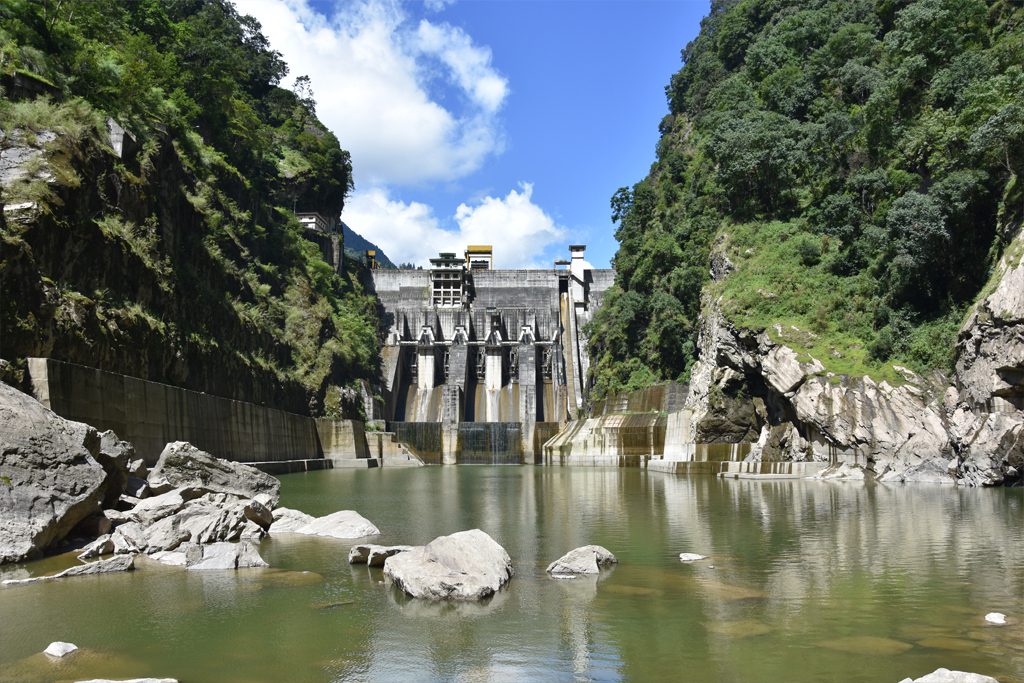
Business Bhutan | Sherab Dorji | February 1, 2023
The hydro-power debt stood at Nu 164.4bn in December and Nu 162.8bn in September last year
As of December 2022, Bhutan’s external hydro power debt has increased compared to that of September, 2022. The debt stood at Nu 164.4bn constituting 69.2% of the total external debt and 80.1% of the Fiscal Year (FY) 2022-23 Gross Domestic Product (GDP) estimate. The hydro debt comprises the debt stock of six hydro-power projects, namely Mangduechu Hydro Power Authority (MHPA), Punatsangchu-I, Punatsangchu-II, Nikachu, Dagachu, and Baoschu.
This is an increase by almost Nu 1.6bn within a quarter. In September 2022, the external hydro-power debt stood at Nu 162.8bn constituting 78.9% of the FY 2022-2023 GDP estimate.
Moreover, hydro-power with 69.2% stands as the highest external debt by sectoral composition, followed by policy and budget with 17.5% and central bank, urban and rural electrification with 2.95 %, 2.3% and 1.6% respectively, amongst others.
According to the Ministry of Finance (MoF), the external debt by the sectoral composition is mainly contracted for financing hydro-power projects in the country, budgetary support from the World Bank, Asian Development Bank (ADB) and Japan International Cooperation Agency (JICA).
The Ministry further stated that other external debt was on account of debt contracted and includes borrowing for financing infrastructure development, such as rural electrification, agriculture, road connectivity, trade infrastructure, and urban development. “It also includes borrowing for education and health sectors under the social category,” the Ministry stated.
However, the non-hydro debt stood at Nu. 73.2bon constituting 30.8% of total external debt and 35.7% of estimated GDP.
The report from the Ministry states that the Public Debt Policy 2016 requires the non-hydro debt stock to be within 35% of GDP during a five-year plan period.
The average non-hydro debt ratio to GDP for the past four years including the last quarter of 2022 of the current FYP is 31.4% and is, therefore, within the threshold, according to the report.
The MoF report also states that the external debt by the contracting agencies includes government’s debt, corporate debt and central bank debt, the hydro-power sector constitutes the major portion of the external debt at 73.2%.
The corporate debt stood at 5.2% followed by central bank debt at 2.9% as of 31stDecember last year.
For instance, the government debt of about Nu 218bn accounts for 91.9% of the total external debt, which includes borrowings for budgetary activities, hydro-power projects and loans availed by the government and on-lent to public corporations.
Similarly, corporate debt pertains to borrowings directly contracted by public corporations and amounts to about Nu 12bn and accounts for 5.2% of the total external debt followed by standby Credit Facility with the Government of India, which makes up 2.9% of the total external debt and the Central Bank’s debt.
Meanwhile, in the three months from October to December last year, the total public debt stock has increased to Nu 7.8bn. This is because of the external debt of 8.2bn, though there was a decrease of domestic debt of about Nu 0.361bn.
However, the public debt stood at Nu 264.8bn as of December end last year from the total public debt of Nu 256.9bn at the end of September for the same year.
As for the external and domestic debt, the debt stood at Nu 237.6bn and Nu 27.2bn as of December end last year from the total external and domestic debt of Nu 229.4bn and Nu 27.5bn in September end last year.
